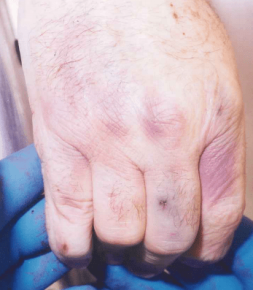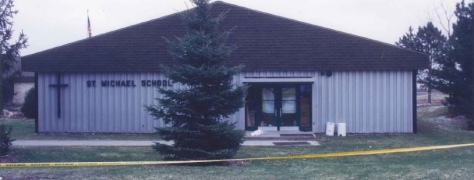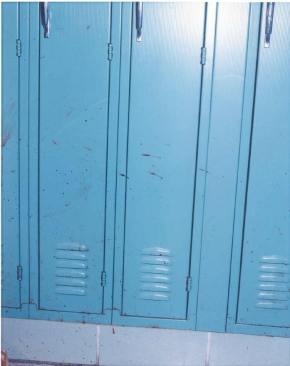For years, Father Alfred Kunz said the Traditional Latin Mass at St. Michael Catholic Church in the village of Dane, northwest of Madison. On Saturday, 20 years after the priest was brutally murdered in the adjoining parish school, a Solemn Requiem Mass was said for his soul at St. Mary of Pine Bluff Catholic Church.
Several dozen people attended the Latin Requiem Mass for Fr. Kunz, held in the beautiful St. Mary church west of Madison. It had every bit of the sacred reverence that Kunz brought to the Latin Masses he celebrated at St. Michael’s in Dane. Standing in stark contrast to the beauty of the incense, bells and Gregorian chant was the fact that Fr. Kunz’s killer has not been brought to justice.

Father John Zuhlsdorf reminded those in attendance that a Requiem Mass is not a celebration of life, but a funeral Mass for the souls of the dead. He urged the faithful to think of their own deaths, and to pray that they not die without benefit of the sacraments, including anointing of the sick. Dying without the sacraments, known as an “unprovided death,” is a truly frightful thing, Zuhlsdorf said. He prayed that God would admit Fr. Kunz into the Beatific Vision of Heaven. (The photo atop this article shows Fr. Zuhlsdorf blessing the catafalque, which serves as a stand-in for the casket in Requiem Masses where the body of the deceased is not present.)
In the narthex of St. Mary’s stood an easel with a framed photograph of Fr. Kunz, inscribed with the words Ecce Agnus Dei, “Behold the Lamb of God.” It was a testament to Kunz’s 42 years of service as a Catholic priest in Cassville, Waunakee, Monroe and the village of Dane. It also spoke of the wounds left behind by such a violent death, perpetrated on a holy man dedicated to serving others.
Brutal Murder
On March 4, 1998, Kunz’s body was discovered in a school hallway by a teacher arriving for the workday. Kunz’s throat had been cut, causing him to bleed to death from a severed carotid artery. The edged weapon used to cut his throat was never found. Police said the killer might have discarded a knife or weapon that was a treasured possession; something he carried every day. Kunz’s body was found face down, at the foot of a statue of St. Michael the Archangel.
The ensuing investigation is said to be the most expansive, and expensive, in Dane County history. Yet no arrests have been made. On the 20th anniversary of Kunz’s murder, the Dane County Sheriff’s Department has begun releasing new details on the case in hopes someone will come forward with a tip that could break the case open. The department started posting details to a Facebook page set up in Fr. Kunz’s name. Some of the posts were written in first person, as if Fr. Kunz were speaking. After a few days, Facebook removed the page and all related content, with no explanation.
Father Kunz was last heard from at 10:23 p.m. on March 3, 1998, when he made a telephone call to a priest friend. Earlier that evening, Kunz attended the taping of a radio program, “Our Catholic Family,” with his friend, Fr. Charles Fiore. After being dropped off at St. Michael’s about 10 p.m., Kunz eventually returned to his living quarters in the school. The perpetrator, laying in wait, might have gained access through a window in Kunz’s apartment. Police said Kunz defended himself and tried to fend off the attack. Kunz was a former Golden Gloves boxer, in good physical shape despite his 67 years. Here is how the sheriff’s department described what happened:
Inside the school hallway, upon inserting my key into the lock of my private quarters and opening the door, it was then that the killer made his move. I saw and confronted the killer; I wasn’t afraid of him. He attacked, but we both landed some punches. The killer then attacked me with a weapon, and then pulled out a knife. I was knocked to my knees, and the killer then slashed my neck, which caused the fatal loss of blood.
On March 3, 1998, someone in the St. Michael school office overheard Fr. Kunz having a heated phone conversation, the sheriff’s department said. Kunz told the caller he could not see them that day. “Furthermore, I don’t think we have anything else to talk about,” Kunz said.
A criminal profile of the murderer suggested he not only knew Fr. Kunz, he was likely familiar with the layout of the church and the school. A former FBI profiler said the killer was most likely surprised by the amount of blood that resulted from the attack. The perpetrator left the school that night covered in blood. He might have been in an altered state of mind that night, and has lived in with regret, and denial, ever since. Details of the crime indicated a “very strong personal motive,” according to then Dane County Sheriff Gary Hamblin.

The sheriff’s department said large amounts of parish money had been moved from account to account prior to the murder. Some “very large checks” were also cut. The week before the murder, collection money was missing from the St. Michael’s sacristy. Four months before the murder, Fr. Kunz told a friend: “Please, please pray for me.”
The murder case exposed biases and hostility in the media and community against the Traditional Latin Mass that Kunz so loved and revered. The TLM is the Catholic liturgy as it has been celebrated for millennia. Fr. Kunz regularly said the Latin Mass, although he also celebrated the Novus Ordo, or new order of the Mass, promulgated by Pope Paul VI in 1969. Catholics from around Wisconsin, Iowa and Illinois drove to St. Michael’s in Dane to participate in the 10 a.m. Sunday Latin Masses offered by Fr. Kunz. This was years before Pope Benedict XVI issued his motu proprio Summorum Pontificum, which stated priests around the world can offer the Latin Mass without permission from a bishop.
One investigator remarked in 1999 that “people have described Kunz’s followers as cult-like.” This attitude smears traditional-minded Catholics and suggests they are followers of a priest instead of Jesus Christ in his Catholic Church. Latin Mass participants were described in media stories as “extremely conservative,” even rigid or at the fringe of Catholic life. Prior to Vatican II in the 1960s, the Latin Mass was simply Catholic, celebrated in the same way around the world. A profile of the Kunz case published in Las Vegas Weekly magazine in 2002 said the Latin Mass “seems to a visiting outsider like a postcard from some musty, long-forgotten time.”
From Devout Catholic Family
Alfred J. Kunz was born on April 15, 1930 in Dodgeville, Wisconsin. He was one of eight children of Alfred J. and Helen T. Kunz. His father emigrated from Switzerland in 1914. His mother was born in Michigan, although her parents came to America from Baden and Württemberg, Germany. Alfred Kunz Sr. was a cheesemaker. He established his own business, the Fairview Cheese Factory, near Stitzer in the Town of Liberty. The Kunz family was devoutly Catholic, attending daily Mass at St. Mary’s in Fennimore. The senior Kunz died on March 3, 1965, exactly 33 years before the attack that ended his son’s life. Mrs. Kunz died in January 1993 at age 98.

A young Alfred heard a calling to the priesthood after suffering a nearly fatal bout of appendicitis at age 10. As he regained consciousness from surgery, he told his mother, “I want to be a priest.” In 1944, Fr. Kunz entered Pontifical College Josephinum in Worthington, Ohio, for a 12-year course of study. At the time, it was the only seminary in the United States under direct supervision of the Vatican. In November 1950, Kunz was featured in an essay in the Cleveland Plain Dealer, pictured serving Mass for Msgr. Gilbert Schmenck, procurator of Pontifical College. Kunz was ordained a priest at Pontifical College upon his graduation on May 26, 1956. According to his cemetery monument, he also held a canon law degree. He said his first Mass on June 3, 1956 at St. Mary Catholic Church in Fennimore. Fr. Kunz served at parishes in Cassville and Waunakee before becoming assistant pastor at St. Victor’s Catholic Church in Monroe. In June 1967, Bishop Cletus O’Donnell named him pastor of St. Michael’s in the village of Dane.
On a very stormy day in April 1965, Fr. Kunz had a brush with death just outside Monroe. As he was leaving town in his automobile, a tornado blew across the road, spinning his car around. When the winds had passed, Fr. Kunz’s car was pointed back toward Monroe. “I saw the light,” he told The Milwaukee Journal, “so I returned.” The storms that day did damage across a wide swath of southern Wisconsin.

Fr. Kunz became known as a faithful and tireless defender of the truth of the Catholic faith. This in and of itself would have been unremarkable in another period of history when modernism didn’t have such a hold on an increasingly secular society. He was a vocal opponent of abortion and promoter of the sanctity of human life from conception until natural death. He once held a funeral for an aborted child at St. Michael’s, burying the baby at the foot of a statue of the Blessed Virgin Mary. He preached the truth about the sinful vice of sodomy and spoke against no-fault divorce. His introduction of the Latin Mass at St. Michael’s rankled some people, even though the Novus Ordo Mass was offered as well. He said Mass for the school children every weekday. Three times a week those 8 a.m. Masses were in Latin.
Fr. Kunz worked hard to ensure that St. Michael’s Catholic Church was rebuilt in the 1970s after it was destroyed by fire. He handled maintenance tasks at the church and school, and even mowed the grass at the cemetery. He took no parish salary and drove a well worn Volkswagen in order to save money. His presence at monthly fish fry fund-raisers was almost legendary. He slaved in the hot kitchen to make sure enough food was available to serve all comers.

The case of Fr. Kunz has at times been dominated by conspiracy theories and harsh assessments of the murdered priest. Because he was an exorcist, some contend Kunz was killed by Luciferians, or someone under Satan’s influence. The sheriff’s department contends Fr. Kunz had “intimate” relationships with women in his parish, although it has never provided details or indicated the source of this information. One former St. Michael parishioner questioned by the sheriff’s department said she felt Fr. Kunz’s name was dragged through the mud with such unsubstantiated allegations.
In a social media dispatch on the case, the sheriff’s department said, “Father Kunz taught that sending children to public school was a mortal sin. Father Kunz didn’t like his teachers socializing with the parishioners. Could someone have disagreed with Father Kunz’s views?” There was no source information offered on the claim that Fr. Kunz taught that going to public school was a mortal sin. The department also said Fr. Kunz was viewed as “very controlling; he had disbanded the church council and didn’t have a finance committee.” Police now say former St. Michael Catholic School Principal Maureen O’Leary was uncooperative during the investigation, even though she and Fr. Kunz were close. O’Leary suggested that the Dane County Sheriff’s Department should call off the the investigation and mark it “unsolved,” police said. “Could something she knew have been a motive for the killer?” the sheriff’s department asked on Facebook March 7, 2018.
Kunz’s friend Fr. Fiore was an early critic of sexual abuse committed by Catholic clergy and covered up by U.S. bishops. Fr. Kunz was a canon-law adviser to The Roman Catholic Faithful, a now-defunct nonprofit group dedicated to exposing sexual misconduct among priests and bishops. Because of this, some believe Kunz might have been killed to keep him from identifying priests or bishops who sexually abused boys or teenagers. Kunz was said to be helping Fiore prepare a report on sexual abuse by clergy, for delivery to Pope John Paul II. Father Malachi Martin said he believed Kunz’s killing was a “deliberate attempt by those who hated what he represented and what he was doing, to silence and disable him permanently.”
A tribute written on the 10th anniversary of his murder described Fr. Kunz as “completely faithful to Christ and the sacraments.” Written by Toby Westerman of Tradition in Action, the tribute continued:
“Like Christ the High Priest, he poured himself out for the love of God and the good of souls. In the words of his close friend and one of the founders of the pro-life movement in the United States, the late Fr. Charles Fiore, ‘in the end Fr. Kunz even poured out his own blood for Jesus and His flock.’ “
An appearance Fr. Kunz made at a public memorial service in 1967 seems in retrospect almost prophetic. Kunz was among five clergy members who spoke words of comfort at Juda High School for nine seniors killed when a plane crashed into the motel where they were staying on a class trip. More than 1,500 people attended the service in the Green County community, located between Monroe and Brodhead. Fr. Kunz spoke of the hope for the Christian dead, reading words from St. Paul’s first letter to the Thessalonians.
“We who live, who survive to the Lord’s coming, will in no way have an advantage over those who have fallen asleep. …The dead in Christ will first rise.”
At the conclusion of the March 3, 2018 Solemn Requiem Mass for Fr. Kunz, the faithful spilled into the narthex of St. Mary’s. They shared memories of Father Al, and wondered aloud if his murder will ever be solved. They spoke most of his love for the Traditional Latin Mass, and how his work helped lay the foundation for traditional Masses now said at St. Mary and other parishes across Wisconsin. Father Al would have been very much at home here in Pine Bluff. On this sunny March day in 2018, in fact, he was at home. ♦
—This article was updated at 9:07 p.m. and 11:26 a.m. CST March 7, 2018, 11:00 a.m. CST March 6, 2018, and at 9:35 p.m. CST March 4, 2018, with new case details from the Dane County Sheriff’s Department.
Anyone with information on the murder of Fr. Kunz should contact the Dane County Sheriff’s Department tips line, 608-284-6900, or via email, tips@danesheriff.com. The department set up a Facebook page in Fr. Kunz’s name, but Facebook has removed the page. The Fr. Kunz Twitter page is still being used by the department to share information on the case. Use the hashtag #whokilledfatherkunz.

















Great article, Mr. Hanneman. I was privileged to have served at the March 3rd Requiem Mass in Pine Bluff. I also was an altar boy for Fr. Kunz for 8 years at St. Michael’s, through all of the 1990s until his tragic death. One minor point I wanted to add about your article is that it was the church, not the school that burned down in April 1974. Old St. Michael church was struck by lighting but thankfully the school was spared, as it was freestanding and separate from the church building at that time.
LikeLike
Thanks for the clarification. I’ve made the correction to the copy. If you’re willing, I’d like to talk to you about your recollections of Fr. Kunz for possible inclusion in a future article. You can contact me at: joehanneman@me.com
LikeLike